All Exams >
Year 4 >
Science for Year 4 >
All Questions
All questions of Living Things & Environment for Year 4 Exam
Camouflage is a kind of adaptation in which an organism deceives others by merging its colour with that of its surroundings. Which of the following colours will best suit a chameleon to hide from its enemies in a forest when it sits on branch of a tree?- a)Red
- b)Blue
- c)Green
- d)Brown
Correct answer is option 'D'. Can you explain this answer?
Camouflage is a kind of adaptation in which an organism deceives others by merging its colour with that of its surroundings. Which of the following colours will best suit a chameleon to hide from its enemies in a forest when it sits on branch of a tree?
a)
Red
b)
Blue
c)
Green
d)
Brown
|
|
Sudhir Mehta answered |
A chameleon changes its skin colour to brown when it sits on the branch of a tree.
Which of these helps the whale to protect itself in cold temperatures?- a)Long tail
- b)Thick fur
- c)A thick layer of fat
- d)A hump
Correct answer is option 'C'. Can you explain this answer?
Which of these helps the whale to protect itself in cold temperatures?
a)
Long tail
b)
Thick fur
c)
A thick layer of fat
d)
A hump
|
|
Sudhir Mehta answered |
A thick layer of fat in whales help them in protecting themselves in the cold weather.
Plants in hilly areas have to bear high speed winds and cold. Which of the following adaptations best helps them face the above conditions?- a)Having lots of branches and leaves
- b)Tall and straight trunk with needle like leaves
- c)Leaves which are modified into spines
- d)Breathing roots which come above the ground
Correct answer is option 'B'. Can you explain this answer?
Plants in hilly areas have to bear high speed winds and cold. Which of the following adaptations best helps them face the above conditions?
a)
Having lots of branches and leaves
b)
Tall and straight trunk with needle like leaves
c)
Leaves which are modified into spines
d)
Breathing roots which come above the ground
|
|
Sudhir Mehta answered |
The trees that grow in hilly areas have needle like leaves, which are very tough and can survive in the cold, snow and wind.
Tigers and leopards have stripes on their bodies. How does this adaptation help them?- a)In keeping their bodies cool.
- b)In keeping their bodies hot.
- c)In mixing with the surroundings.
- d)In looking beautiful.
Correct answer is option 'C'. Can you explain this answer?
Tigers and leopards have stripes on their bodies. How does this adaptation help them?
a)
In keeping their bodies cool.
b)
In keeping their bodies hot.
c)
In mixing with the surroundings.
d)
In looking beautiful.
|
|
Sudhir Mehta answered |
Tigers and leopards have stripes on their bodies to mix with their surroundings.
Ramu brought a plant with thick branches and leaves from the plains and planted it in a marshy area. What must the new plant do to survive in its new environment?- a)It must change its colour in its new environment.
- b)It must change its leaves into spines to reduce the loss of water.
- c)It must start trapping insects and eat them.
- d)It must develop breathing roots to get more air.
Correct answer is option 'D'. Can you explain this answer?
Ramu brought a plant with thick branches and leaves from the plains and planted it in a marshy area. What must the new plant do to survive in its new environment?
a)
It must change its colour in its new environment.
b)
It must change its leaves into spines to reduce the loss of water.
c)
It must start trapping insects and eat them.
d)
It must develop breathing roots to get more air.
|
|
Sudhir Mehta answered |
In marshy areas, soil does not contain air. To adjust to marshy conditions, the plant should develop breathing roots.
Plants give out water through the pores present on the lower side of their leaves. Plants living in deserts need to reduce the loss of water because water is very scarce in deserts. Which of the following is an adaptation developed by the desert plants to manage the above situation?
- a)They have lots of branches and leaves.
- b)They do not shed leaves in the summer.
- c)They develop roots which come above the ground.
- d)Their leaves are modified into spines.
Correct answer is option 'D'. Can you explain this answer?
Plants give out water through the pores present on the lower side of their leaves. Plants living in deserts need to reduce the loss of water because water is very scarce in deserts. Which of the following is an adaptation developed by the desert plants to manage the above situation?
a)
They have lots of branches and leaves.
b)
They do not shed leaves in the summer.
c)
They develop roots which come above the ground.
d)
Their leaves are modified into spines.
|
|
Sudhir Mehta answered |
Desert plants have adapted to their environment to minimize water loss. One common adaptation is the modification of leaves into spines. This reduces the surface area through which water can be lost, significantly decreasing transpiration.
Therefore, the correct adaptation developed by desert plants to manage water loss is: Their leaves are modified into spines.
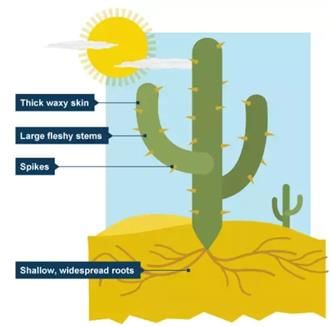

Which of the following body parts maintain balance in a monkey?- a)Tail
- b)Neck
- c)Legs
- d)Abdomen
Correct answer is option 'A'. Can you explain this answer?
Which of the following body parts maintain balance in a monkey?
a)
Tail
b)
Neck
c)
Legs
d)
Abdomen
|
|
Sudhir Mehta answered |
The tail of a monkey helps it in maintaining the balance of body.
Which characteristic is typical of evergreen trees?- a)Keeping their leaves all year round
- b)Changing leaf color every season
- c)Growing only in tropical regions
- d)Shedding all leaves in winter
Correct answer is option 'A'. Can you explain this answer?
Which characteristic is typical of evergreen trees?
a)
Keeping their leaves all year round
b)
Changing leaf color every season
c)
Growing only in tropical regions
d)
Shedding all leaves in winter

|
Nclex Coaching Centre answered |
Evergreen trees retain their leaves throughout the year, allowing them to photosynthesize continuously. This is in contrast to deciduous trees, which shed their leaves annually to conserve energy during unfavorable seasons.
How do polar bears keep themselves warm in icy environments?- a)By migrating to warmer areas
- b)By building nests
- c)By having a thick layer of blubber and fur
- d)By changing color to blend in
Correct answer is option 'C'. Can you explain this answer?
a)
By migrating to warmer areas
b)
By building nests
c)
By having a thick layer of blubber and fur
d)
By changing color to blend in

|
Nclex Coaching Centre answered |
Polar bears stay warm in icy environments thanks to their thick layer of blubber and dense fur. These adaptations provide insulation against the cold temperatures and help them maintain their body heat.
Which animal has a special adaptation to help it find food in the dark?- a)Bat
- b)Lion
- c)Eagle
- d)Whale
Correct answer is option 'A'. Can you explain this answer?
a)
Bat
b)
Lion
c)
Eagle
d)
Whale
|
|
Aarini Wali answered |
Bats navigate and find insect prey using echolocation. They produce sound waves at frequencies above human hearing, called ultrasound. The sound waves that is emitted by bats bounce off objects in their environment.
The plants that are most useful to man are- a)hilly plants.
- b)underwater plants.
- c)desert plants.
- d)plants of the grass family.
Correct answer is option 'D'. Can you explain this answer?
The plants that are most useful to man are
a)
hilly plants.
b)
underwater plants.
c)
desert plants.
d)
plants of the grass family.
|
|
Sudhir Mehta answered |
Plants of the grass family provide us with cereals, hence they are most useful to us.
Trees that do not lose their leaves in winter are called _____. - a) Deciduous
- b) Evergreen
- c) Coniferous
- d) Seasonal
Correct answer is option 'B'. Can you explain this answer?
Trees that do not lose their leaves in winter are called _____.
a)
Deciduous
b)
Evergreen
c)
Coniferous
d)
Seasonal

|
Kds Coaching answered |
Evergreen trees keep their leaves all year long. This helps them stay green and healthy, even when the weather changes.
Which of the following plants does not need soil to grow?- a)Cactus
- b)Fern
- c)Water hyacinth
- d)Pitcher plant
Correct answer is option 'C'. Can you explain this answer?
Which of the following plants does not need soil to grow?
a)
Cactus
b)
Fern
c)
Water hyacinth
d)
Pitcher plant
|
|
Sudhir Mehta answered |
Water hyacinth is an aquatic plant.
What feature of a camel helps it survive in a desert environment?
- a)Long legs
- b)Thick fur
- c)Ability to store water
- d)Large ears
Correct answer is option 'C'. Can you explain this answer?
What feature of a camel helps it survive in a desert environment?
a)
Long legs
b)
Thick fur
c)
Ability to store water
d)
Large ears
|
|
Aarini Wali answered |
The camels have fat in its humps which store water.
Which of the following birds can survive in cold winter in Polar Regions?- a)Ostrich
- b)Emu
- c)Penguin
- d)Siberian crane
Correct answer is option 'C'. Can you explain this answer?
Which of the following birds can survive in cold winter in Polar Regions?
a)
Ostrich
b)
Emu
c)
Penguin
d)
Siberian crane
|
|
Yashvi Mehra answered |
Survival of Birds in Cold Winter in Polar Regions
Polar regions are known for their extremely cold temperatures and harsh environments, making it challenging for many animals to survive. However, some bird species have adapted to these conditions and have developed unique characteristics that enable them to thrive in these frigid areas. Among the given options, the bird that can survive in the cold winter of polar regions is the Penguin.
1. Penguin:
Penguins are well-known for their ability to survive in the icy conditions of the Polar Regions. These flightless birds have several adaptations that help them endure the extreme cold:
- Thick layer of blubber: Penguins have a thick layer of blubber, which acts as insulation to keep their bodies warm in freezing temperatures. This layer also helps them float in water.
- Waterproof feathers: Penguins have special feathers that are tightly packed and overlap, forming a waterproof barrier. This keeps their bodies dry and prevents heat loss when they swim in freezing waters.
- Huddle behavior: Penguins often huddle together in large groups to conserve heat. By standing close to each other, they create a windbreak and collectively maintain a warmer microclimate within the huddle.
- Counter-current heat exchange: Penguins have a unique circulatory system that allows them to minimize heat loss. Warm blood from their heart circulates close to cold blood returning from their extremities. This heat exchange reduces heat loss through their feet and beaks.
- Adapted breeding cycles: Many penguin species time their breeding cycles to coincide with the Antarctic summer when food is abundant. By laying their eggs and raising chicks during this period, they increase the chances of survival for their offspring.
Conclusion:
Out of the given options, only the Penguin has the necessary adaptations to survive in the cold winter of Polar Regions. These adaptations include a thick layer of blubber, waterproof feathers, huddling behavior, counter-current heat exchange, and adapted breeding cycles. These unique characteristics enable penguins to thrive in the freezing temperatures and harsh conditions of the Polar Regions.
Polar regions are known for their extremely cold temperatures and harsh environments, making it challenging for many animals to survive. However, some bird species have adapted to these conditions and have developed unique characteristics that enable them to thrive in these frigid areas. Among the given options, the bird that can survive in the cold winter of polar regions is the Penguin.
1. Penguin:
Penguins are well-known for their ability to survive in the icy conditions of the Polar Regions. These flightless birds have several adaptations that help them endure the extreme cold:
- Thick layer of blubber: Penguins have a thick layer of blubber, which acts as insulation to keep their bodies warm in freezing temperatures. This layer also helps them float in water.
- Waterproof feathers: Penguins have special feathers that are tightly packed and overlap, forming a waterproof barrier. This keeps their bodies dry and prevents heat loss when they swim in freezing waters.
- Huddle behavior: Penguins often huddle together in large groups to conserve heat. By standing close to each other, they create a windbreak and collectively maintain a warmer microclimate within the huddle.
- Counter-current heat exchange: Penguins have a unique circulatory system that allows them to minimize heat loss. Warm blood from their heart circulates close to cold blood returning from their extremities. This heat exchange reduces heat loss through their feet and beaks.
- Adapted breeding cycles: Many penguin species time their breeding cycles to coincide with the Antarctic summer when food is abundant. By laying their eggs and raising chicks during this period, they increase the chances of survival for their offspring.
Conclusion:
Out of the given options, only the Penguin has the necessary adaptations to survive in the cold winter of Polar Regions. These adaptations include a thick layer of blubber, waterproof feathers, huddling behavior, counter-current heat exchange, and adapted breeding cycles. These unique characteristics enable penguins to thrive in the freezing temperatures and harsh conditions of the Polar Regions.
Birds, some insects, and bats are examples of _____ animals.- a)Aquatic
- b)Aerial
- c)Terrestrial
- d)Arboreal
Correct answer is option 'B'. Can you explain this answer?
a)
Aquatic
b)
Aerial
c)
Terrestrial
d)
Arboreal

|
Nclex Coaching Centre answered |
Aerial animals are those that can fly, like birds, some insects, and bats. They have special features like wings and feathers that help them fly in the sky.
Aerial animals are animals which spend most of their time- a)in water.
- b)in air.
- c)on land.
- d)underground.
Correct answer is option 'B'. Can you explain this answer?
Aerial animals are animals which spend most of their time
a)
in water.
b)
in air.
c)
on land.
d)
underground.
|
|
Sudhir Mehta answered |
Aerial animals spend most of their time in air.
Which of the following animals has hind limbs longer than the forelimbs?- a)Frog
- b)Fish
- c)Goat
- d)Elephant
Correct answer is option 'A'. Can you explain this answer?
Which of the following animals has hind limbs longer than the forelimbs?
a)
Frog
b)
Fish
c)
Goat
d)
Elephant
|
|
Sudhir Mehta answered |
A frog has longer hind limbs than the fore limbs.
The feet of frogs and ducks are webbed. This adaptation helps them in- a)holding branches tightly.
- b)swimming in water.
- c)flying in the air.
- d)grabbing and eating insects.
Correct answer is option 'B'. Can you explain this answer?
The feet of frogs and ducks are webbed. This adaptation helps them in
a)
holding branches tightly.
b)
swimming in water.
c)
flying in the air.
d)
grabbing and eating insects.
|
|
Sudhir Mehta answered |
Webbed feet helps aquatic birds like the duck in swimming.
State whether the following statement is True or FalseScales on the skin of animals like lizards, chameleons, and snakes protect them from drying.- a)True
- b)False
Correct answer is option 'A'. Can you explain this answer?
State whether the following statement is True or False
Scales on the skin of animals like lizards, chameleons, and snakes protect them from drying.
a)
True
b)
False

|
Rahul Kumar answered |
Yes, it's true! Animals like lizards, chameleons, and snakes have scaly bodies. These scales on their skin help to keep them from getting dry. Just like how our skin protects us, their scales are like special shields that keep them safe and healthy.
The scaly skin of snakes- a)protects them from their enemies.
- b)scares human beings.
- c)makes them beautiful.
- d)helps them crawl and protects them from drying.
Correct answer is option 'D'. Can you explain this answer?
The scaly skin of snakes
a)
protects them from their enemies.
b)
scares human beings.
c)
makes them beautiful.
d)
helps them crawl and protects them from drying.
|
|
Sudhir Mehta answered |
The scaly skin of snakes helps them in crawling and protect the skin drying.
What is an adaptation?- a)A change in an animal's body or behavior to help it survive
- b)A type of food animals eat in their habitats
- c)A place where animals live and play
- d)A special feature animals have to look beautiful
Correct answer is option 'A'. Can you explain this answer?
What is an adaptation?
a)
A change in an animal's body or behavior to help it survive
b)
A type of food animals eat in their habitats
c)
A place where animals live and play
d)
A special feature animals have to look beautiful
|
|
Eduskill Classes answered |
- An adaptation is like when an animal changes something about itself, like how it looks or acts, to help it live better in its home.
- For example, polar bears have thick fur to stay warm in cold places.
- So, when animals make these changes to stay safe and healthy in their habitats, we call it an adaptation.
Mangroves develop aerial roots. This is an adaptation to the- a)amount of water available
- b)temperature
- c)type of soil
- d)amount of rain
Correct answer is option 'A'. Can you explain this answer?
Mangroves develop aerial roots. This is an adaptation to the
a)
amount of water available
b)
temperature
c)
type of soil
d)
amount of rain
|
|
Riya Singh answered |
- Mangroves grow in marshy areas. Marshy soil have clay soil with plenty of water and has no air.
- The water cannot drain away and remains in the soil.
- Hence the plants in the soil develop breathing roots that help the roots to breathe.
Check out the image of Mangroves below:
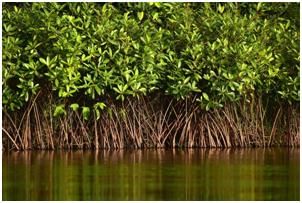
Shreya plucked a lotus plant from a pond near her house. She observed that it has a long hollow stem. Can you explain the function of the stem?
- a)To help leaves float on water
- b)To absorb soil
- c)To fix the plant to the bottom of the pond
- d)To make the flower beautiful
Correct answer is option 'A'. Can you explain this answer?
Shreya plucked a lotus plant from a pond near her house. She observed that it has a long hollow stem. Can you explain the function of the stem?
a)
To help leaves float on water
b)
To absorb soil
c)
To fix the plant to the bottom of the pond
d)
To make the flower beautiful
|
|
Sudhir Mehta answered |
The stems in lotus plants are hollow and very light. This helps the leaves to float on water.
What adaptation helps a cactus survive in a dry desert?- a)Long roots that reach deep water
- b)Thick, waxy skin
- c)Brightly colored flowers
- d)Both (A) and (C)
Correct answer is option 'B'. Can you explain this answer?
What adaptation helps a cactus survive in a dry desert?
a)
Long roots that reach deep water
b)
Thick, waxy skin
c)
Brightly colored flowers
d)
Both (A) and (C)
|
|
Subset Academy answered |
Cacti have a thick, waxy skin that minimizes water loss, an essential adaptation for survival in arid desert environments.
This waxy layer helps to reduce evaporation, allowing the cactus to retain moisture for longer periods, which is crucial given the scarce water availability in deserts.
While other adaptations, like deep roots, are beneficial, the thick, waxy skin is a primary feature directly related to conserving water.
This waxy layer helps to reduce evaporation, allowing the cactus to retain moisture for longer periods, which is crucial given the scarce water availability in deserts.
While other adaptations, like deep roots, are beneficial, the thick, waxy skin is a primary feature directly related to conserving water.
Which of the following adaptations protects a stick insect from its enemies?- a)Camouflage
- b)Migration
- c)Hibernation
- d)Moulting
Correct answer is option 'A'. Can you explain this answer?
Which of the following adaptations protects a stick insect from its enemies?
a)
Camouflage
b)
Migration
c)
Hibernation
d)
Moulting
|
|
Sudhir Mehta answered |
A leaf insect blend with its surroundings to protect itself from its enemies.
What helps fixed aquatic plants like water lilies stay afloat?- a)Long, deep roots
- b)Thick, woody stems
- c)Broad, waxy leaves
- d)Spiny leaves
Correct answer is option 'C'. Can you explain this answer?
a)
Long, deep roots
b)
Thick, woody stems
c)
Broad, waxy leaves
d)
Spiny leaves
|
|
Abhiram Sengupta answered |
Why Broad, Waxy Leaves Help Water Lilies Float
Water lilies are fascinating aquatic plants that have adapted uniquely to their environment. One of the primary features that help them stay afloat is their broad, waxy leaves.
Key Features of Water Lily Leaves:
- Buoyancy: The broad shape of the leaves increases surface area, helping them to float on the water's surface. This design allows them to capture sunlight for photosynthesis while remaining buoyant.
- Waxy Coating: The leaves have a waxy coating that provides a waterproof barrier. This prevents water from saturating the leaves, which could make them heavy and sink.
- Lightweight Structure: The internal structure of the leaves is designed to be lightweight. This further aids in buoyancy, allowing them to stay afloat without submerging.
Comparison with Other Options:
- Long, Deep Roots: While roots anchor the plant to the sediment below, they do not directly contribute to buoyancy.
- Thick, Woody Stems: Water lilies typically have soft stems that are flexible rather than thick and woody. Woody stems would be counterproductive for floating.
- Spiny Leaves: Spiny leaves are not a feature of water lilies. They may deter herbivores but do not assist in buoyancy.
Conclusion:
In summary, broad, waxy leaves are essential for water lilies to float effectively. They provide buoyancy, prevent water absorption, and ensure the plant remains healthy and photosynthetically active on the water's surface.
Water lilies are fascinating aquatic plants that have adapted uniquely to their environment. One of the primary features that help them stay afloat is their broad, waxy leaves.
Key Features of Water Lily Leaves:
- Buoyancy: The broad shape of the leaves increases surface area, helping them to float on the water's surface. This design allows them to capture sunlight for photosynthesis while remaining buoyant.
- Waxy Coating: The leaves have a waxy coating that provides a waterproof barrier. This prevents water from saturating the leaves, which could make them heavy and sink.
- Lightweight Structure: The internal structure of the leaves is designed to be lightweight. This further aids in buoyancy, allowing them to stay afloat without submerging.
Comparison with Other Options:
- Long, Deep Roots: While roots anchor the plant to the sediment below, they do not directly contribute to buoyancy.
- Thick, Woody Stems: Water lilies typically have soft stems that are flexible rather than thick and woody. Woody stems would be counterproductive for floating.
- Spiny Leaves: Spiny leaves are not a feature of water lilies. They may deter herbivores but do not assist in buoyancy.
Conclusion:
In summary, broad, waxy leaves are essential for water lilies to float effectively. They provide buoyancy, prevent water absorption, and ensure the plant remains healthy and photosynthetically active on the water's surface.
What does a habitat provide for an organism?- a)Predators to challenge survival
- b)Unfavorable living conditions
- c)Everything it needs to survive
- d)Limited space for growth
Correct answer is option 'C'. Can you explain this answer?
a)
Predators to challenge survival
b)
Unfavorable living conditions
c)
Everything it needs to survive
d)
Limited space for growth

|
Nclex Coaching Centre answered |
A habitat provides everything an organism needs to survive, including food, water, shelter, and appropriate living conditions. For plants, this means having the necessary resources to grow and reproduce, even in varied and extreme environments like deserts, mountains, and underwater regions. Adaptations help plants thrive in these diverse habitats.
In cactus plants, photosynthesis occurs in- a)leaves.
- b)spines.
- c)roots.
- d)stems.
Correct answer is option 'D'. Can you explain this answer?
In cactus plants, photosynthesis occurs in
a)
leaves.
b)
spines.
c)
roots.
d)
stems.
|
|
Sudhir Mehta answered |
In cactus plants, photosynthesis occurs in its thick and fleshy stems.
Which of the following is an example of plant adaptation?- a)Growing faster
- b)Changing leaf color in the fall
- c)Using thorns to scare off animals
- d)Releasing fragrance during the day
Correct answer is option 'C'. Can you explain this answer?
a)
Growing faster
b)
Changing leaf color in the fall
c)
Using thorns to scare off animals
d)
Releasing fragrance during the day
|
|
Kavya Basak answered |
Understanding Plant Adaptation
Plant adaptation refers to the changes that plants undergo to survive in their environments. These adaptations help them deal with challenges such as harsh weather, limited water, and threats from herbivores.
Why Option C is Correct
- Using Thorns for Protection:
One of the most effective adaptations plants have developed is the use of thorns. These sharp structures serve as a defense mechanism to deter animals from eating them. By scaring off potential herbivores, plants increase their chances of survival and reproduction.
- Examples of Plants with Thorns:
- Cacti: Many cacti have thorns that not only protect them from animals but also reduce water loss by providing shade.
- Roses: Rose bushes have thorns that prevent animals from munching on their leaves and flowers.
Why Other Options Are Not Adaptations
- Growing Faster:
While growing faster can be beneficial, it is not a specific adaptation to a threat. Instead, it is a general growth response to environmental conditions.
- Changing Leaf Color in the Fall:
This is a seasonal change that helps plants prepare for winter, but it is not a defensive adaptation against threats.
- Releasing Fragrance During the Day:
While this can attract pollinators, it is not a protective adaptation aimed at survival against herbivores.
Conclusion
In summary, using thorns to scare off animals is a clear example of plant adaptation as it directly impacts the plant's ability to survive and thrive in its environment.
Plant adaptation refers to the changes that plants undergo to survive in their environments. These adaptations help them deal with challenges such as harsh weather, limited water, and threats from herbivores.
Why Option C is Correct
- Using Thorns for Protection:
One of the most effective adaptations plants have developed is the use of thorns. These sharp structures serve as a defense mechanism to deter animals from eating them. By scaring off potential herbivores, plants increase their chances of survival and reproduction.
- Examples of Plants with Thorns:
- Cacti: Many cacti have thorns that not only protect them from animals but also reduce water loss by providing shade.
- Roses: Rose bushes have thorns that prevent animals from munching on their leaves and flowers.
Why Other Options Are Not Adaptations
- Growing Faster:
While growing faster can be beneficial, it is not a specific adaptation to a threat. Instead, it is a general growth response to environmental conditions.
- Changing Leaf Color in the Fall:
This is a seasonal change that helps plants prepare for winter, but it is not a defensive adaptation against threats.
- Releasing Fragrance During the Day:
While this can attract pollinators, it is not a protective adaptation aimed at survival against herbivores.
Conclusion
In summary, using thorns to scare off animals is a clear example of plant adaptation as it directly impacts the plant's ability to survive and thrive in its environment.
Which of the following statements is FALSE regarding hilly trees like the Pine?- a)They do not have flowers.
- b)They are dome shaped.
- c)They are conifers.
- d)Their leaves are needle-shaped.
Correct answer is option 'B'. Can you explain this answer?
Which of the following statements is FALSE regarding hilly trees like the Pine?
a)
They do not have flowers.
b)
They are dome shaped.
c)
They are conifers.
d)
Their leaves are needle-shaped.
|
|
Jyoti Gupta answered |
Understanding Hilly Trees like Pine
Hilly trees, particularly pines, are fascinating plants that exhibit unique characteristics. Let's analyze the statements provided to identify which one is false.
Statement Analysis
- a) They do not have flowers.
- This statement is true. Pines are gymnosperms, meaning they reproduce using cones instead of flowers.
- b) They are dome shaped.
- This statement is false. While some trees may have a dome shape, pines typically have a more conical or pyramidal shape, especially when they are young. Their branches extend outward and upward, creating a distinctive silhouette that is not dome-like.
- c) They are conifers.
- This statement is true. Pines belong to the conifer family, which means they bear cones and have needle-like leaves.
- d) Their leaves are needle-shaped.
- This statement is also true. Pine trees have long, slender leaves that resemble needles, which help reduce water loss and withstand cold climates.
Conclusion
In summary, the false statement among the options is that hilly trees like pines are dome-shaped. Instead, they have a conical shape, making them easily recognizable in forests and hilly areas. Understanding these characteristics helps us appreciate the adaptability and beauty of pine trees in their natural habitats.
Hilly trees, particularly pines, are fascinating plants that exhibit unique characteristics. Let's analyze the statements provided to identify which one is false.
Statement Analysis
- a) They do not have flowers.
- This statement is true. Pines are gymnosperms, meaning they reproduce using cones instead of flowers.
- b) They are dome shaped.
- This statement is false. While some trees may have a dome shape, pines typically have a more conical or pyramidal shape, especially when they are young. Their branches extend outward and upward, creating a distinctive silhouette that is not dome-like.
- c) They are conifers.
- This statement is true. Pines belong to the conifer family, which means they bear cones and have needle-like leaves.
- d) Their leaves are needle-shaped.
- This statement is also true. Pine trees have long, slender leaves that resemble needles, which help reduce water loss and withstand cold climates.
Conclusion
In summary, the false statement among the options is that hilly trees like pines are dome-shaped. Instead, they have a conical shape, making them easily recognizable in forests and hilly areas. Understanding these characteristics helps us appreciate the adaptability and beauty of pine trees in their natural habitats.
Which characteristic allows Hydrilla leaves to survive underwater?- a)Broad and flat leaves
- b)Thick and fleshy leaves
- c)Thin, narrow leaves
- d)Spiny and sharp leaves
Correct answer is option 'C'. Can you explain this answer?
a)
Broad and flat leaves
b)
Thick and fleshy leaves
c)
Thin, narrow leaves
d)
Spiny and sharp leaves

|
Nclex Coaching Centre answered |
Hydrilla leaves are thin and narrow, which allows water to pass through them easily without causing damage. This adaptation helps the plant survive in the flowing water environment. Additionally, this feature prevents the leaves from tearing due to water movement, ensuring the plant remains intact.
Why do floating plants like duckweed have spongy leaves with air spaces?- a)To attract bees
- b)To store food
- c)To help them float
- d)To scare animals away
Correct answer is option 'C'. Can you explain this answer?
a)
To attract bees
b)
To store food
c)
To help them float
d)
To scare animals away

|
Nclex Coaching Centre answered |
Floating plants like duckweed have spongy leaves filled with air spaces, which help them float on the water. This makes it easier for the plant to get sunlight and stay stable on the water surface.
Which type of tree loses all its leaves in autumn to survive the winter?- a)Evergreen tree
- b)Deciduous tree
- c)Cactus tree
- d)Palm tree
Correct answer is option 'B'. Can you explain this answer?
Which type of tree loses all its leaves in autumn to survive the winter?
a)
Evergreen tree
b)
Deciduous tree
c)
Cactus tree
d)
Palm tree

|
Kds Coaching answered |

- A deciduous tree is a type of tree that loses all its leaves at once in autumn.
- This helps the tree survive the cold winter by saving water.
- In spring, new leaves grow back.
- Examples of deciduous trees include cherry and maple.
- On the other hand, evergreen trees keep their leaves all year round and do not lose them in autumn.
How do underwater plants help fish and other aquatic animals?- a)By giving shade
- b)By making food for them
- c)By releasing oxygen into the water
- d)By growing flowers
Correct answer is option 'C'. Can you explain this answer?
How do underwater plants help fish and other aquatic animals?
a)
By giving shade
b)
By making food for them
c)
By releasing oxygen into the water
d)
By growing flowers
|
|
Riya Singh answered |
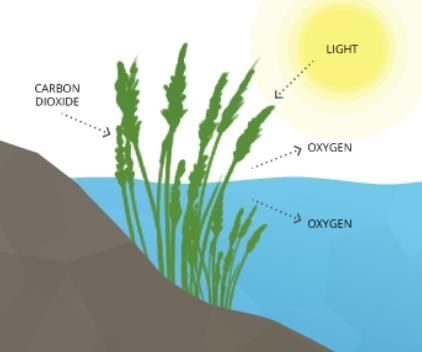
Underwater plants release oxygen into the water during photosynthesis. This oxygen is important for fish and other aquatic animals to breathe and live, helping to keep the water healthy.
Why do fixed aquatic plants have stomata on the upper side of their leaves?- a)To look pretty
- b)To save water
- c)To take in air
- d)To stay cool
Correct answer is option 'C'. Can you explain this answer?
a)
To look pretty
b)
To save water
c)
To take in air
d)
To stay cool
|
|
Riya Singh answered |
Fixed aquatic plants, such as water lilies, have stomata on the upper side of their leaves to take in air. This is important because their leaves float on the water, so having stomata on top allows them to get the carbon dioxide they need for photosynthesis.
Which of the following can complete the given box.

- a)Vulture
- b)Bear
- c)Mosquito
- d)Tiger
Correct answer is option 'A'. Can you explain this answer?
Which of the following can complete the given box.


a)
Vulture
b)
Bear
c)
Mosquito
d)
Tiger
|
|
Sudhir Mehta answered |
A vulture feed on dead animals and on left over flesh of dead bodies of animals.
Animals living in cold regions have _____ on their bodies to protect them from cold.- a)feathers
- b)blubber
- c)scales
- d)fur
Correct answer is option 'D'. Can you explain this answer?
Animals living in cold regions have _____ on their bodies to protect them from cold.
a)
feathers
b)
blubber
c)
scales
d)
fur

|
Rahul Kumar answered |
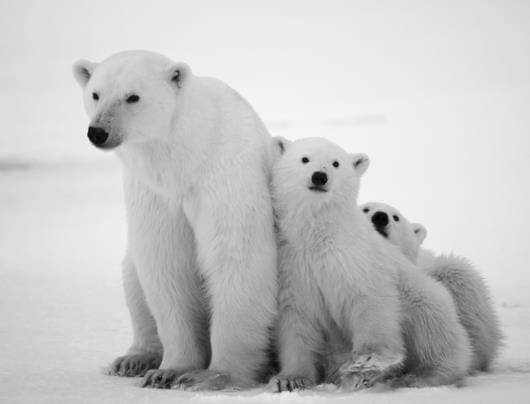
Animals living in cold regions have fur on their bodies to protect them from cold. Fur acts like a warm coat for them, keeping them cozy and comfortable in the chilly weather.
What are plants that grow in water called?- a)Desert plants
- b)Mountain plants
- c)Aquatic plants
- d)Forest plants
Correct answer is option 'C'. Can you explain this answer?
What are plants that grow in water called?
a)
Desert plants
b)
Mountain plants
c)
Aquatic plants
d)
Forest plants

|
Kds Coaching answered |
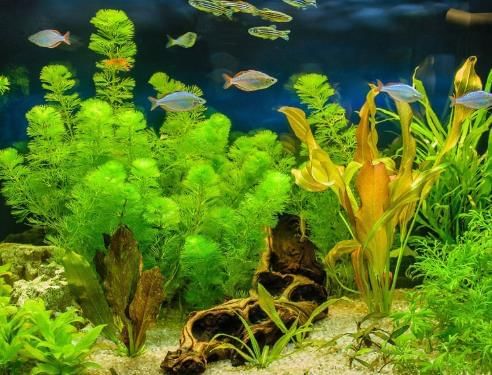
Plants that grow in water are called aquatic plants. They live in water environments like lakes, ponds, rivers, and oceans.
Animals live in places that provide food, water, and __________, which is called their habitat.- a)Air
- b)Space
- c)Shelter
- d)Fire
Correct answer is option 'C'. Can you explain this answer?
Animals live in places that provide food, water, and __________, which is called their habitat.
a)
Air
b)
Space
c)
Shelter
d)
Fire
|
|
Eduskill Classes answered |
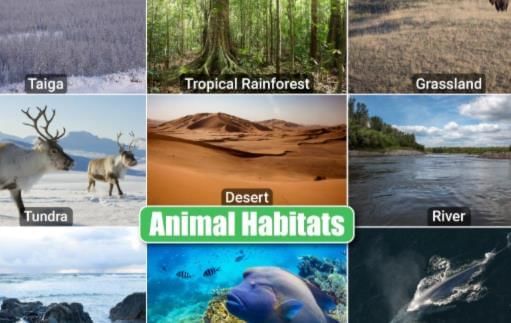
Animals live in places that provide food, water, and shelter which is called their habitat. Shelter is a place where animals stay safe and protected from weather and other dangers.
How do underwater plants like Hydrilla survive underwater? 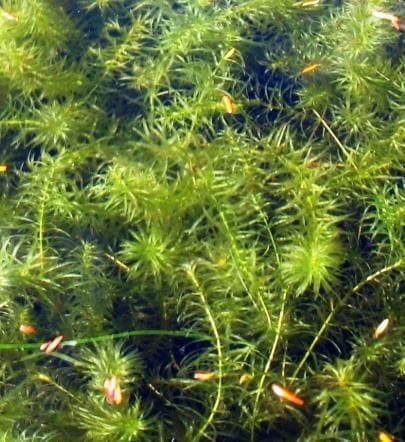
- a)By having thick, hard leaves
- b)By having broad leaves with a waxy surface
- c)By having thin, narrow leaves
- d)By growing above the water
Correct answer is option 'C'. Can you explain this answer?
How do underwater plants like Hydrilla survive underwater?

a)
By having thick, hard leaves
b)
By having broad leaves with a waxy surface
c)
By having thin, narrow leaves
d)
By growing above the water

|
Dr Manju Sen answered |
Underwater plants like Hydrilla have thin, narrow leaves that let water pass through them easily. This helps the plants stay in place and not get torn by water movement.
Chapter doubts & questions for Living Things & Environment - Science for Year 4 2025 is part of Year 4 exam preparation. The chapters have been prepared according to the Year 4 exam syllabus. The Chapter doubts & questions, notes, tests & MCQs are made for Year 4 2025 Exam. Find important definitions, questions, notes, meanings, examples, exercises, MCQs and online tests here.
Chapter doubts & questions of Living Things & Environment - Science for Year 4 in English & Hindi are available as part of Year 4 exam.
Download more important topics, notes, lectures and mock test series for Year 4 Exam by signing up for free.
Science for Year 4
22 videos|34 docs|11 tests
|

Contact Support
Our team is online on weekdays between 10 AM - 7 PM
Typical reply within 3 hours
|
Free Exam Preparation
at your Fingertips!
Access Free Study Material - Test Series, Structured Courses, Free Videos & Study Notes and Prepare for Your Exam With Ease

 Join the 10M+ students on EduRev
Join the 10M+ students on EduRev
|

|
Create your account for free
OR
Forgot Password
OR
Signup to see your scores
go up
within 7 days!
within 7 days!
Takes less than 10 seconds to signup









